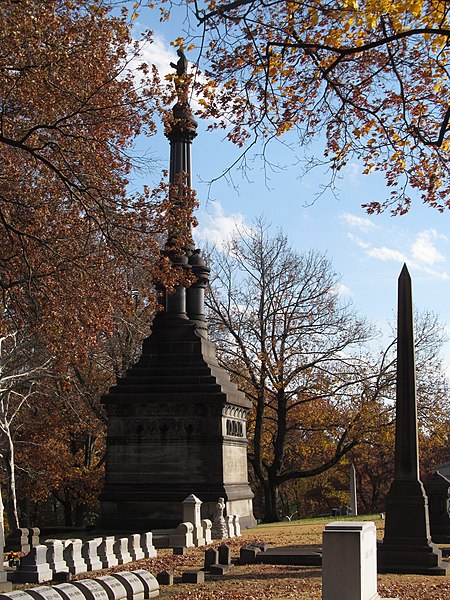
A simplified Doric mausoleum in the style of the early to middle twentieth century. The stained-glass menorah is doubtless a standard catalogue item, but it is well executed.


A marble obelisk for a family of early settlers in the Chartiers Valley, where the family has taken full advantage of all the surfaces offered for inscription. The cemetery opened in 1861, so it is probable that family members who died before then have not been interred here, but are remembered here as part of family tradition.




From any angle the Duncan mausoleum is impressive. There is nothing like it anywhere else in Pittsburgh—or, as far as old Pa Pitt knows, in the world. The architect was Theophilus P. Chandler Jr., the Philadelphia tastemaker who also designed First Presbyterian downtown and Third Presbyterian at Fifth and Negley in Shadyside. He seems to have been proud of this mausoleum: if you go looking for it on line, you will turn up Father Pitt’s pictures (of course), and then a large number of prints and postcards from the time the mausoleum was built.

Doubtless an armchair psychologist would have something to say about the attraction of big pointy things as a display of wealth. From a practical point of view, however, an obelisk is a very efficient—and, more importantly, traditional—way to achieve height. Finding the family plot in a large cemetery is not always easy, and a landmark like this helps a great deal.